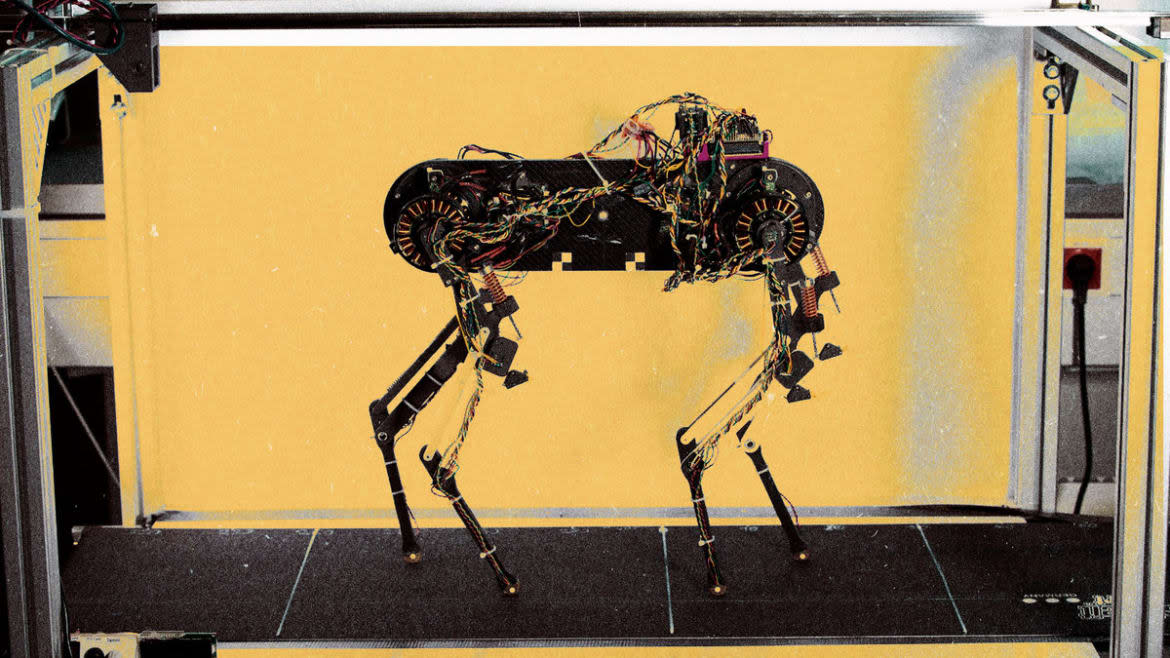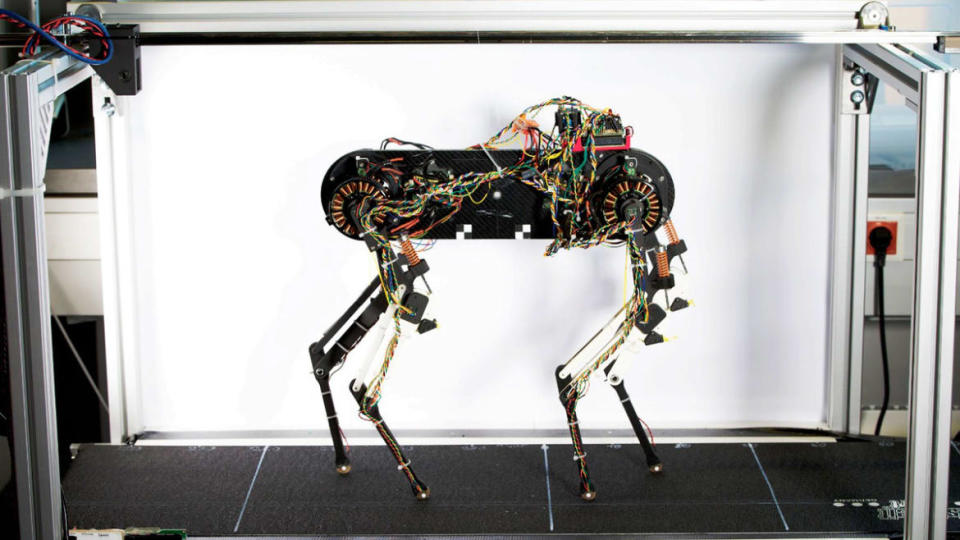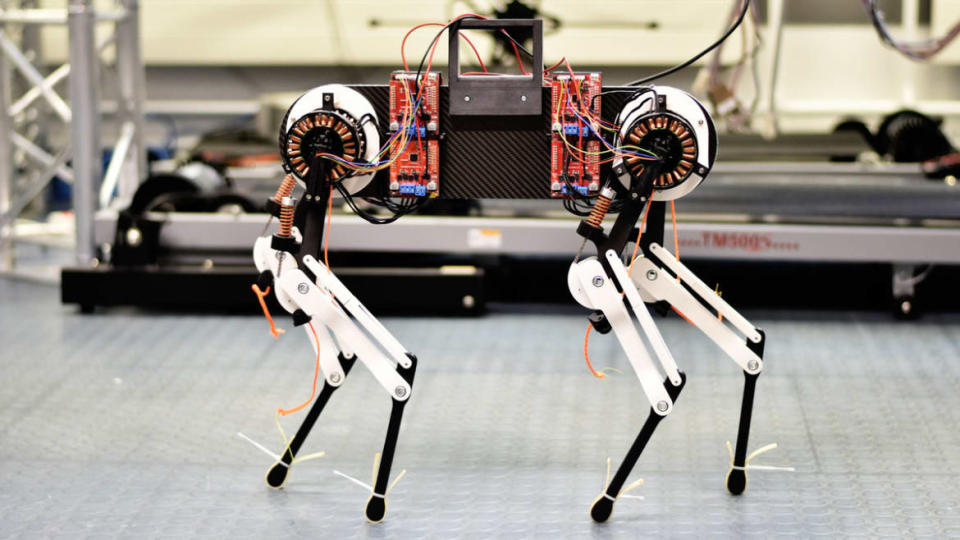This Robot Dog Learned to Walk in Just an Hour on Its Own

The robot overlords are at it again—and this time, they’re learning how to walk faster than us. Researchers at the Max Planck Institute for Intelligent Systems (MPI-IS) in Germany have created a robotic dog capable of learning how to bandy about on all fours in roughly an hour.
While this might seem like the prelude to a robot uprising, it was actually a part of an experiment to study how flesh-and-blood animals learn how to walk from stumbling. For example, when human babies learn how to walk, they typically stumble and fall on their first tries. Those “mistakes,” however, are actually crucial in the way we adjust our leg muscles and nervous system to eventually walk normally.
Utilizing a four-legged labrador-sized robot dubbed Morti, the MPI-IS team was able to successfully replicate this learning process—in incredible time too. They published a paper of their study on Monday in the journal Nature Machine Intelligence.
“As engineers and roboticists, we sought the answer by building a robot that features reflexes just like an animal and learns from mistakes,” Felix Ruppert, a former researcher at MPI-IS and co-author of the study, said in a press release. “If an animal stumbles, is that a mistake? Not if it happens once. But if it stumbles frequently, it gives us a measure of how well the robot walks.”
To learn how to walk, Morti used an AI that was designed to mimic the central pattern generator (CPG), a system of neural circuits in animal bodies that determine basic motor behaviors like walking, breathing, blinking, and chewing. While CPG is located in the spinal cord in animals, the robo-dog utilizes a lightweight computer to control its own motion—optimizing its motor functions so that it learns how to walk in about an hour.

The researchers used an AI that mimics the central pattern generator in animal spines.
During this time, Morti goes from stumbling and struggling before the CPG adapts to its gait. Eventually, it learns how to walk smoothly and efficiently. The MPI-IS researchers now hope that the robo-dog will give even more insights into the biology of actual animals.
"We can't easily research the spinal cord of a living animal. But we can model one in the robot," Alexander Badri-Spröwitz, a biomechanics and locomotion researcher at MPI-IS and co-author of the study, said in the release. "We know that these CPGs exist in many animals. We know that reflexes are embedded; but how can we combine both so that animals learn movements with reflexes and CPGs? This is fundamental research at the intersection between robotics and biology. The robotic model gives us answers to questions that biology alone can't answer."

Morti the robot dog learned how to walk in roughly an hour.
Got a tip? Send it to The Daily Beast here
Get the Daily Beast's biggest scoops and scandals delivered right to your inbox. Sign up now.
Stay informed and gain unlimited access to the Daily Beast's unmatched reporting. Subscribe now.

 Yahoo News
Yahoo News 
